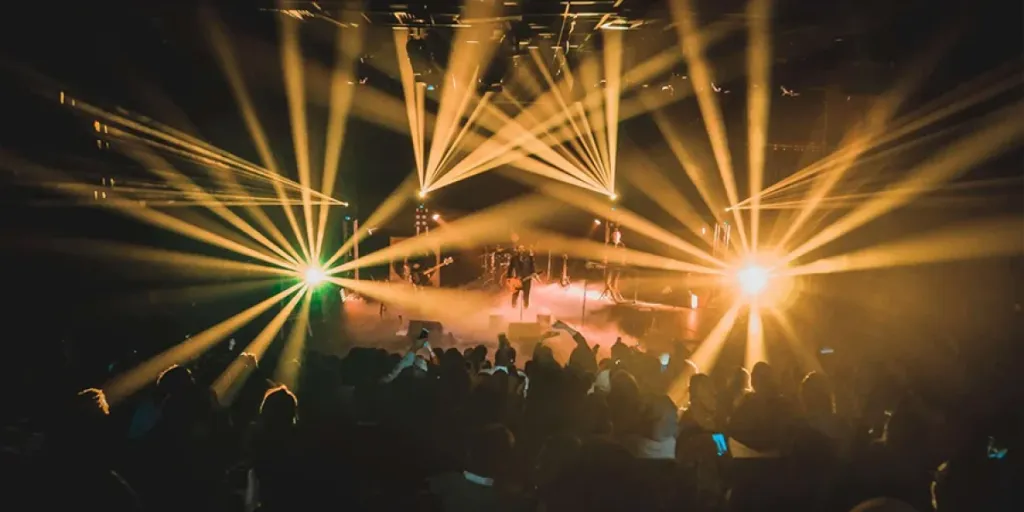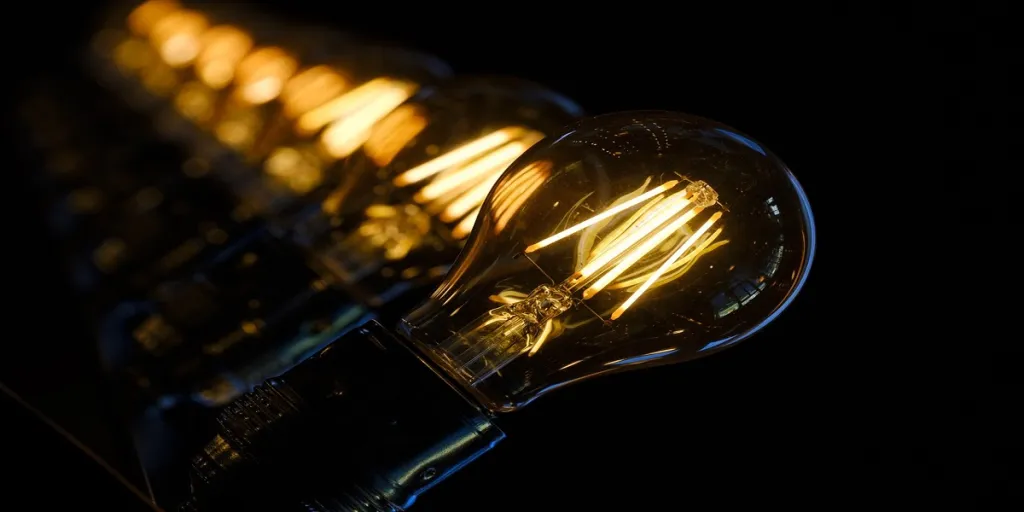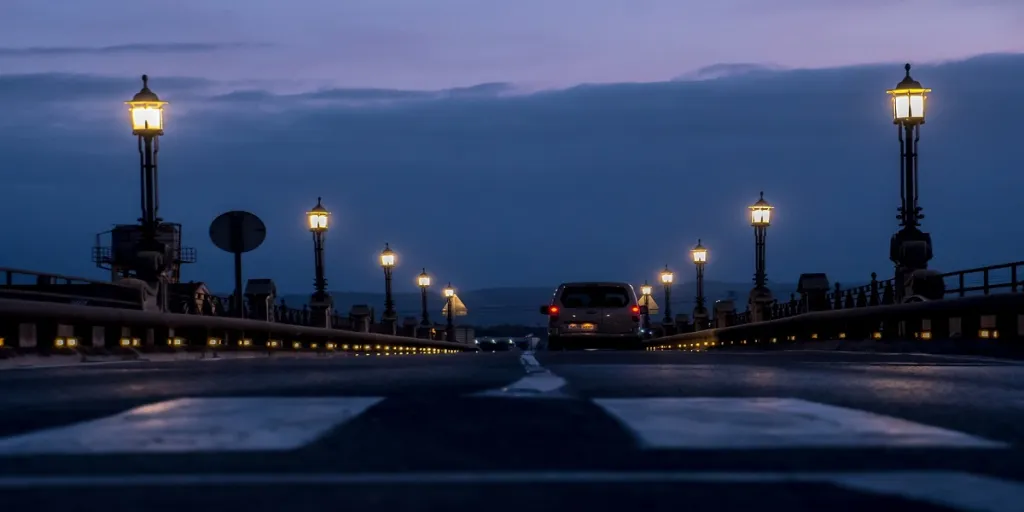Planning to sell stage lights to customers but unsure of what types to invest and stock? Look no further since this well-researched article will help companies determine the business potential of stage lights as well as share market trends and insights for a profitable business opportunity.
Table of Contents
Understanding the business potential of stage lights
What to look for when choosing stage lights to sell?
How to choose the best stage lights for different end customers?
Understanding the business potential of stage lights
According to reports, the stage lighting market is expected to display a CAGR of 5% from 2022 to 2032. It is anticipated that the global stage lighting market will display a value increase from USD 1.75 billion in 2022 to USD 2.8 billion by 2032. The chief reason that accounts for this potential growth is the consistent demand for live entertainment globally. The market growth is driven by the demand for stage illumination fixtures since entertainment companies are once again planning music concerts and festivals after the relaxation of distancing measures.
What to look for when choosing stage lights to sell?
As a seller, it is important to be mindful of the types of stage lights that are chosen for sale to the customers. To develop a profitable business model and to ensure increasing revenue streams, it helps to be insightful of the main types of stage lights as well as their market share and market potential, individually.
Let’s have a look at some of the leading types of stage lights and study their key features as well as their pros and cons.
Main types of stage lights
The types of stage lights dominating the industry are as follows:
PAR lights

PARs (Parabolic Aluminized Reflectors) are hailed as the most extensively used light fixtures in the entertainment industry. They are not only cost-effective but also display utility in diverse applications. They are widely used in theaters, concerts, and motion picture productions. Since they are lightweight, it is easy to switch them if a different beam angle is required. In the year 2019 alone, they generated a revenue of USD 440 billion. The PAR market size is expected to reach the multi-million level by 2028.
LED stage lights
LED stage lights are a viable investment since they present a longer lifespan, require minimum to no maintenance, produce comparatively less heat, and are super cost effective. The demand for LED stage lights is displaying an exponential growth rate. According to the Global LED Lighting Report and Forecast 2022-2027, LED lights attained a market value of USD 54,382 million in the year 2021. Their market potential is expected to display a CAGR of 9.1% between 2022 and 2027. This will help them gain a market share of USD 109,661 million. It is important to note that LED lights are expected to present a higher demand in contrast to other types of stage lights since they display a longer life span. Also, since they are ecofriendly, the rising concerns for the environment are another factor boosting their demand.
Strip lights
Strip lights help enjoy lighting at a reduced energy cost since they operate on low voltage DC power. They look aesthetically pleasing and are super affordable. They are mainly used to provide color coverage to the stage. They can also be used to decorate buildings or churches during celebratory events. They are available in a wide range of colors and allow users to modify brightness across a spectrum. According to research, the global strip light market came to be valued at USD 14.26 million in 2021. Also, it is anticipated to display a growth of 15.94% from 2021 to 2027.
Moving-head lights

Moving-head lights are specially designed to illuminate stage and theatrical working area settings. These days, moving-head lights employ LED technology for improved and sustained brightness levels. Moving-head lighting fixtures have varieties of designs such as beam, spot, wash and hybrid. Their diverse color capability, variant movement as well as gobo patterns make them an essential part of stage lighting. They are hence increasingly employed in clubs, DJ shows, TV theaters, TV studios, discos, ballrooms, etc.
Lighting textures
Stage lights employ varying textures to create a desirable effect on the stage. The main ones are:
Monochromatic
Monochromatic textures are used in stage lighting for a desaturated effect. LEDs can help work this out on the stage. They are balanced and do not trigger any particular emotion.
Gobo
Lighting on the stage can be used to create different and interesting textures. For instance, the employment of a dappled gobo can generate the effect of light through trees.
Transitions
The movement between different lightings on stage are known as transitions. There are two main types:
- Crossfade
In this type of transition, one lighting seamlessly fades into the other one.
- Snap
In this one, one lighting immediately transits into the next one.
Lighting colors
Complementary
Colors that are directly opposite on the color wheel are complementary colors, such as red/green, teal/amber, and orange/purple. They too are balanced and look great when paired together on the stage.
Triads
Triads are also complementary colors as they exist in a triangle across the color wheel. Some examples include red, blue and yellow or orange, purple and green. They add in a good pop of color on the stage.
Cool and warm tones
Cool shades are typified by colors as green, teal, blue and purple. Cool shades are meant to make you feel calm, relaxed and refreshed. Warm tones, on the other hand, are for inducing brightness. They are to remind viewers of all things vibrant and sunny.
How to choose the best stage lights for different end customers?
In order to make a profitable purchase and buy stage lights that settle well with customers, it is important to be mindful of key considerations. Let’s have a look at some:
Budget
Understanding the budgeting needs of the customers helps in making a profitable purchasing decision. This involves considering the fact that not every stage light buyer will be willing to spend a hefty sum of money for illumination purposes. As a seller, it is required that one be familiar with reasonable options for stage lights such as LEDs or PARs that are easy on the pocket yet effective.
Battery size and weight

Some customers are interested in purchasing small, lightweight stage lights that better suit their staging needs. On the other hand, there are customers who want to invest in heavy, weighty stage lights. As a seller, being well aware of the battery size and battery weight of stage lights is recommended since it helps in determining the demand of bulk customers.
Durability
It is recommended to understand the installation needs of stage lights of every customer. If they intend to move frequently, they would require durable stage lights that make for a tough fixture. Also, it can be a good idea to suggest stage lights with adequate warranty to customers so that in case of a malfunction, they know they can always be helped out.
The future of stage lighting
Given that the stage lighting industry is expected to display a big boom in terms of its market share and potential by 2027 as discussed in the article, it is pertinent that buyers be mindful of not only the types of stage lights that their customers could be interested in but also in the key considerations they may have while purchasing stage lights. Both these considerations are useful in defining a lucrative stage light selling career.




